History in costumes. Divisions of the Zouavs during the Crimean War
Crimean War 1853-1856 It turned out to be the first military campaign of the Zouaves beyond the borders of Algeria and Africa as a whole. This period became their finest hour.
The Zouaves took direct part in the siege and seizure of Sevastopol and made a significant contribution to the victory of the Allied forces in the war.
During the Crimean War, they covered themselves with military glory. Their unusual, memorable form and reputation of brave desperate soldiers, capable of performing even the most complex missions, made them world-famous, so to speak of the military unit.
2. Zouavy actively participated in the Algerian campaign of France. Soldiers of other regiments could get into their ranks only after two years of military service. Experienced professional warriors, they quickly earned the title of elite French troops in Africa.
By the beginning of the Crimean War, three Zouav regiments were part of the French army, each of which was located in one of the provinces of Algeria as a garrison.
In contrast to the uniforms of the remaining divisions of the French army, the Zouav uniform was significantly distinguished by its eastern exoticism.
The zouaves wore a short jacket of dark blue cloth without a collar, waist-length, embroidered with a red-brick woolen braid. The fake pocket of the special cloth is woven into the braid pattern. Each regiment had a pocket of its own color: 1-y-red, 2-th - white, 3-th - straw-yellow. The lining of the jacket is made of canvas or burlap.
Under the jacket, the Zouava wore a characteristic vest, which consisted of the front of the cloth and cotton back. The vest was buttoned on the right side with five buttons.
On their feet were cloth trousers of the color of garans (red) just below the knees. The breech cut involved possible difficult military conditions — their style included the so-called “Lamoriciere hole” (le trou de Lamoriciere) for draining water after forcing water obstacles.
The blue sash was worn over the vest and trousers, supporting and protecting the back.
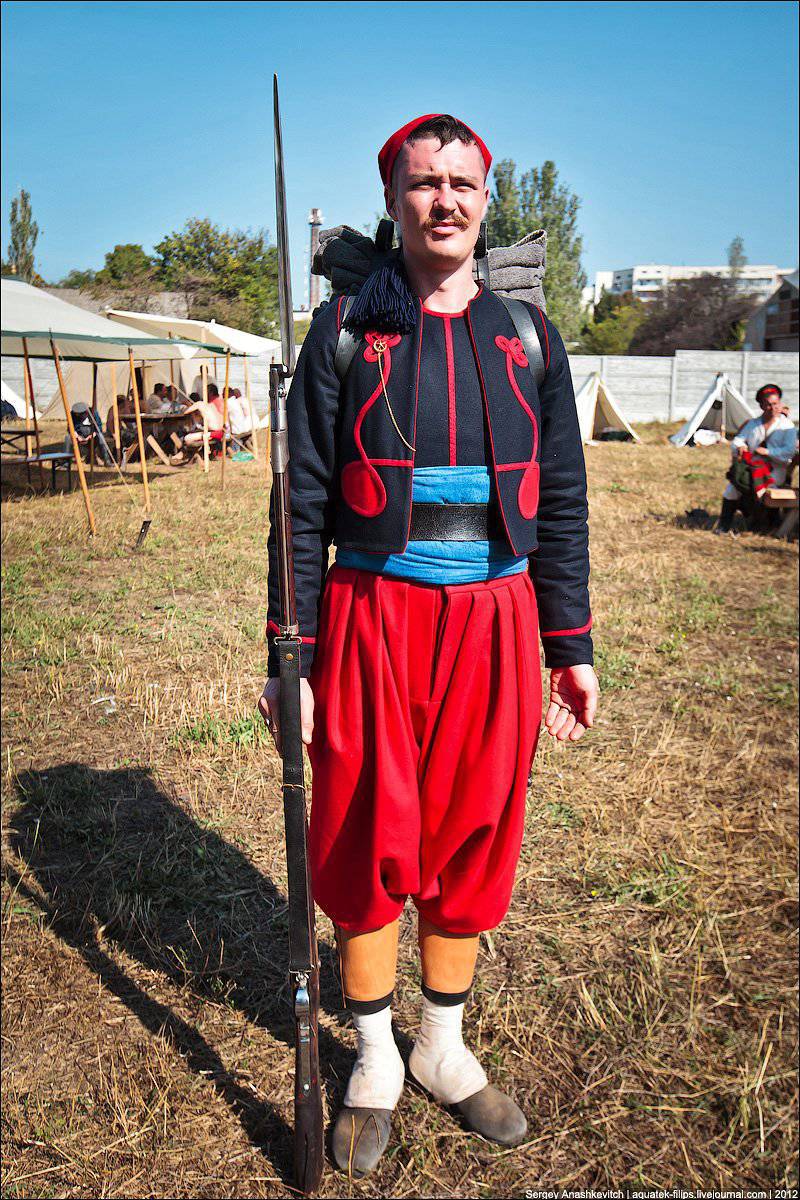
3. Zuawam was given a backpack of a sample of foot rangers, which was worn with the help of two straps and straps. The peculiarities of the Zuav uniform and equipment did not allow them to wear a linear infantry satchel with additional fastenings on the waist belt.
In the satchel, the soldiers put all their simple belongings: linen, a spare pair of boots, white pants, a working shirt, a spoon, two packs of ammunition.
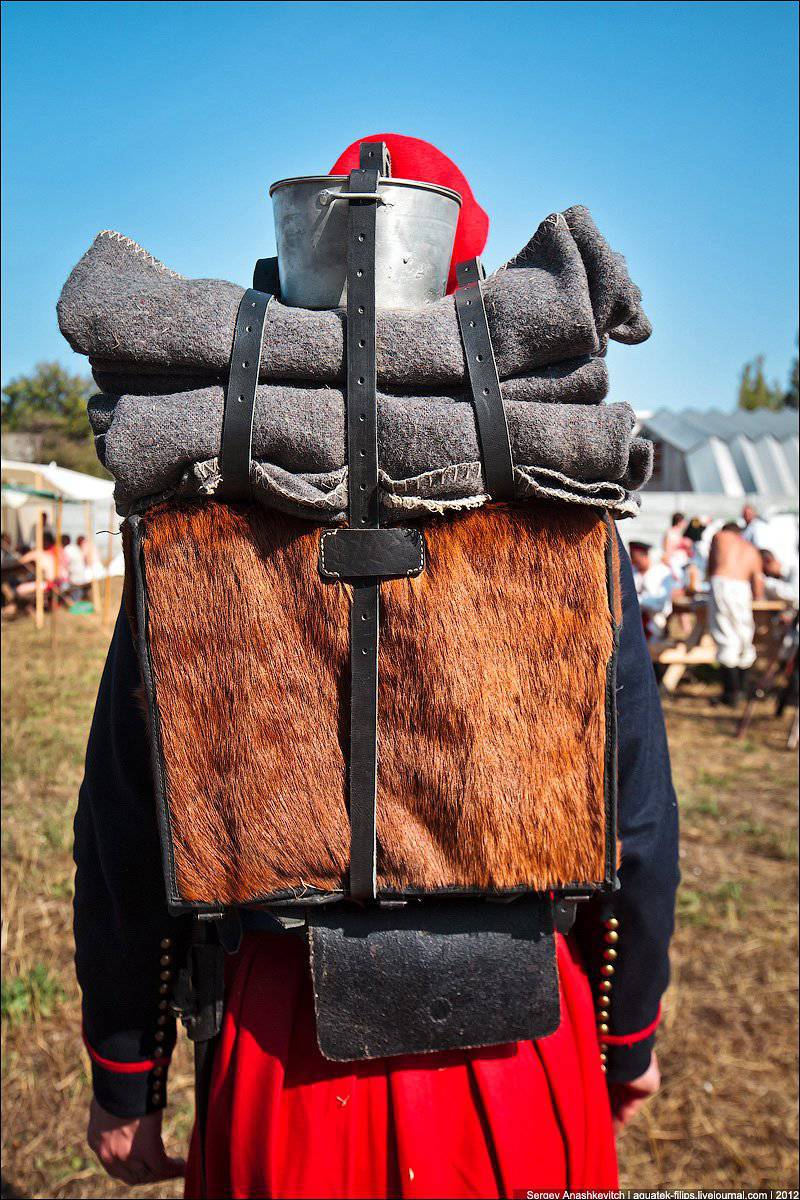
4. On the satchel was attached a bowler and a boar - a gray cape, which served as a warming tent, a tent, kitchen utensils (a grand can or a steam table).
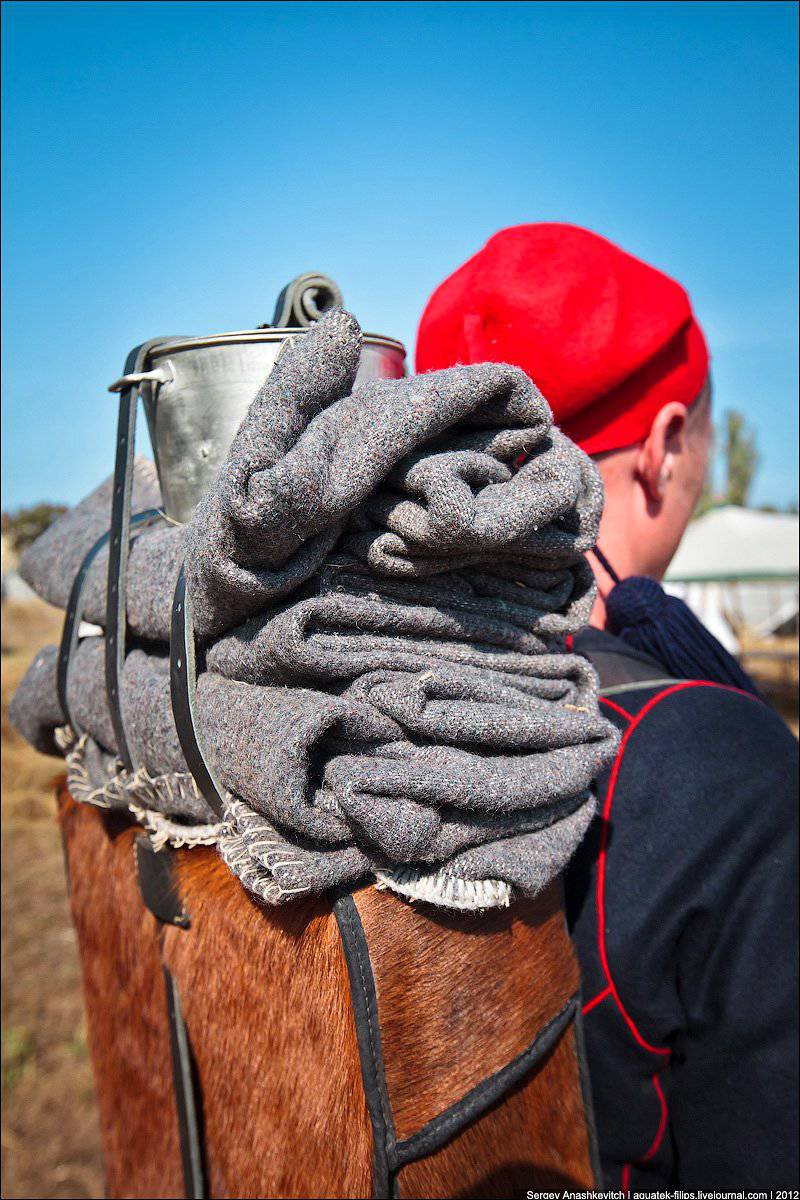
5. The Zouaves were armed with rifled blasting rifles of the MLE1842T model. The barrel of such a gun is slightly shorter than the infantry. Caliber about 18 mm. When firing used black powder and lead bullet.
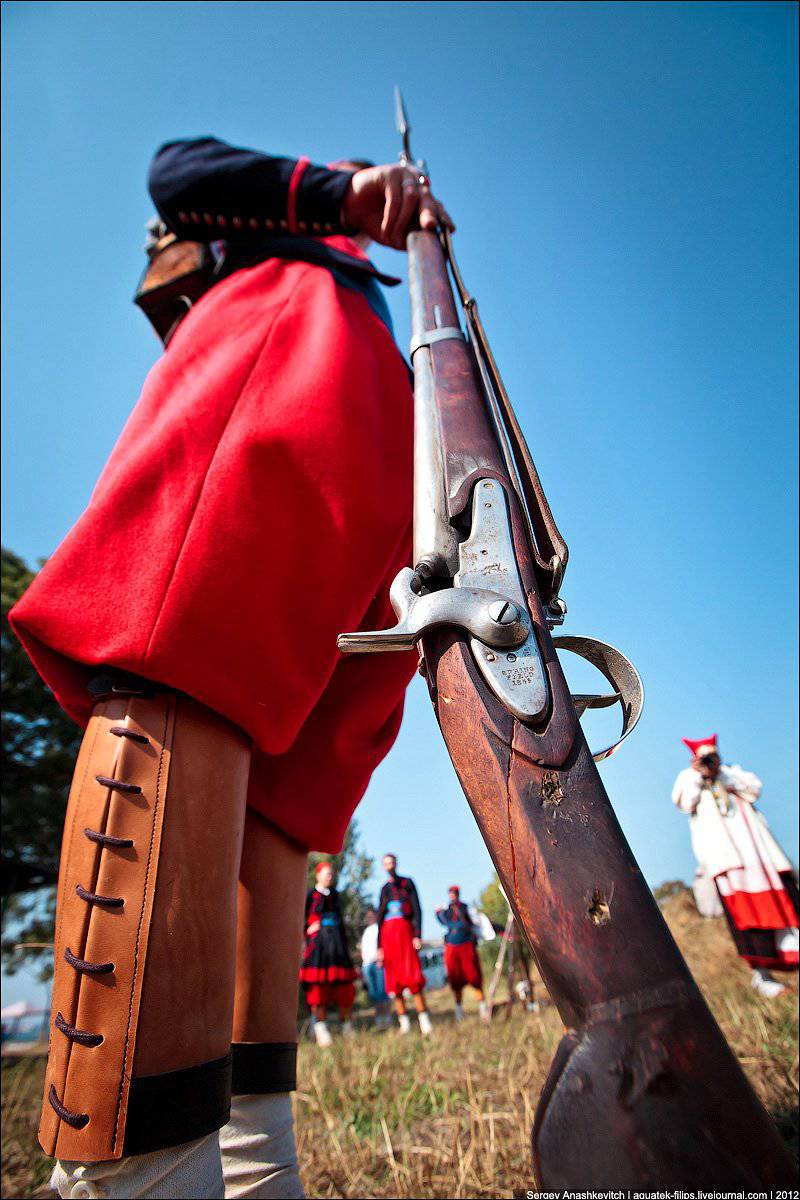
6. A three-sided bayonet relied on the gun.
7. Another “trademark” of the Zouav is a crescent-shaped copper badge with a star, to which is attached a chain with a needle for cleaning the bare hole of a musket.
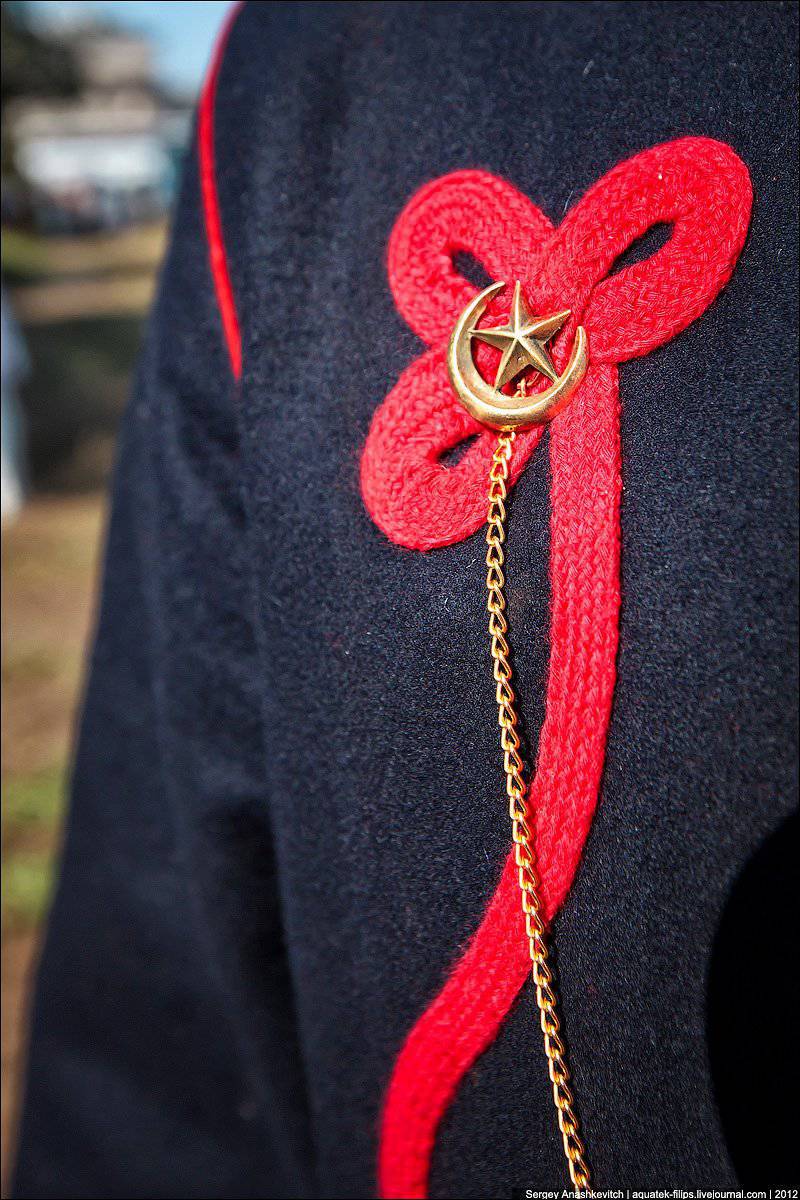
8. This badge was worn on the jacket, on the chest on the right side, and the protravnik itself was stabbed on the inside.
9. The legs and shoes of the Zouaves were protected by leggings. They were the same as in the whole army, fastened with 9 or 11 buttons, lined with canvas or burlap. Zouavy for "chic" could produce ad hoc samples, which are fastened with many small buttons. In photos taken during the siege of Sevastopol, the Zouaves are more often depicted in more practical leather leggings.
Leather zhambye or leggings above gaiters - a special detail of the uniform. During the Crimean War, the zhambier was peculiar exclusively to the Zouaves and Algerian riflemen. Their main purpose is to strengthen the calf and support the gaiter.
10. On images and rare photographs of that time, it was sometimes possible to see along with soldiers of the French army and women. They were Vivandye or marketeers.
It is known that at that time in many armies of the world women constituted an integral part of them as wives or mistresses who followed their elects to the war, and masses of other women who sometimes even secretly tried to follow the soldiers and arrange their lives. But it was only in France that this issue was approached in such a way as to wrap the hindrance with maximum benefit for the army.
Women were allowed to engage in trade, thereby supporting and securing the military food supply system for soldiers. If in the era of the Napoleonic Wars, the profitable business of the Vivandiers was regulated only by the military gendarmerie, which issued metal tokens and patents for trade, then in the era of the Crimean War, everything changed greatly.
Vivandye were incorporated into the army. Their number was strictly regulated by 6 people per regiment (the regiment had approximately 3 500 - 3 800 people).
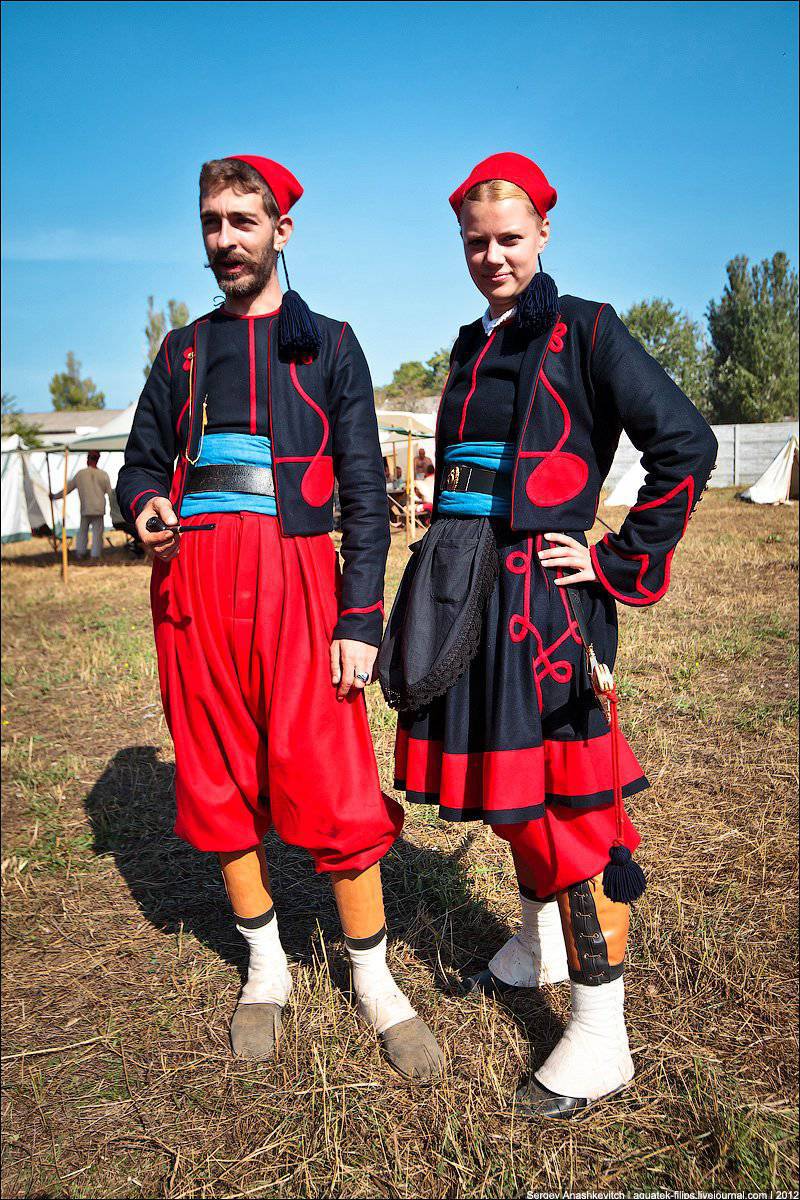
11. The uniforms of the Zuawa marka girls have undergone many changes: from straight trousers, skirts and corset-uniform worn by women’s linear parts, to the female version of the male soldier’s uniform, with a short jacket, sash and trousers.
An interesting and distinctive headdress of a Zouav is a fez or Sheshia made of garant felt. Each regiment had its own traditions in wearing a fez. The first regiment wore it with a door to the right, the second - to the left, the third - on top. The turban is green, or Shesh complements the fez.
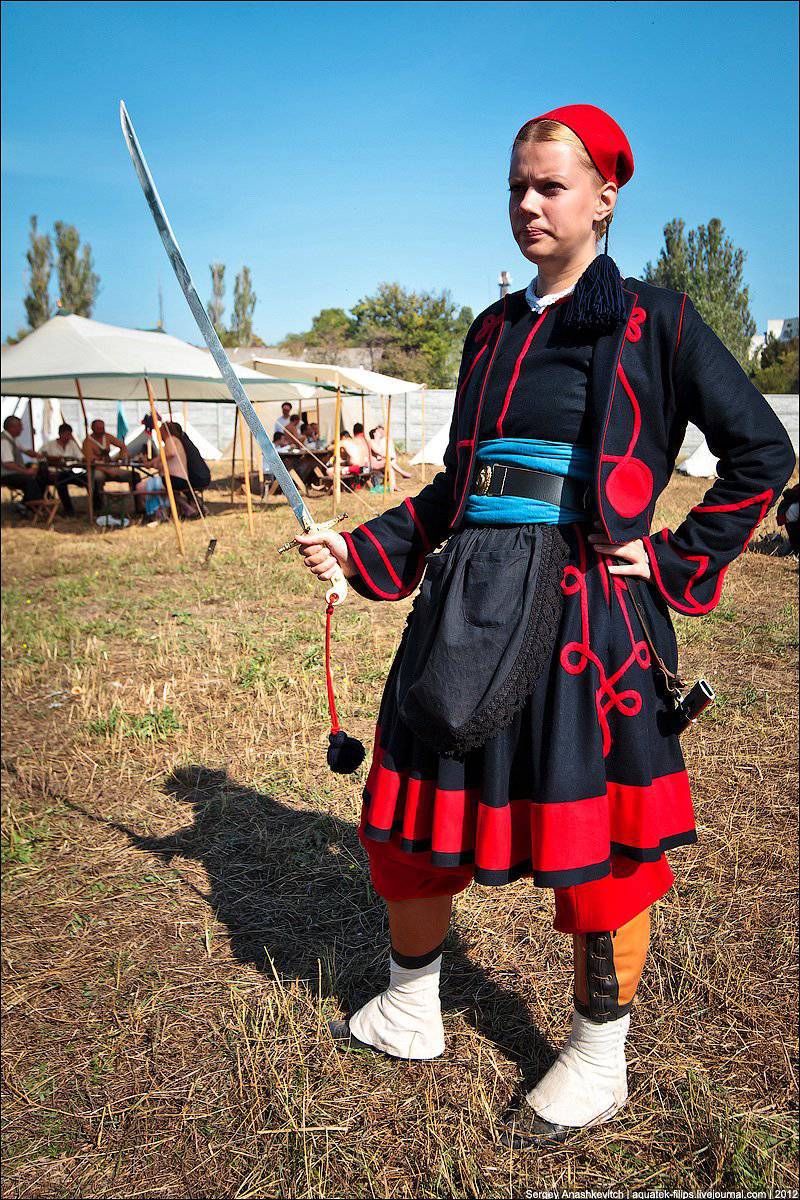
12. Their functions have changed a little. As historian Thomas Cardoza notes, the need for selling supplies to soldiers has decreased due to centralized supply. Although, when there were problems with deliveries, their services were very helpful.
However, Vivandye was valuable in helping care for the wounded and sick, and simply by women's participation and support. The soldiers greatly appreciated their kind words and the care shown by women. Vivandye was respected, it was an honorable and important position, which was not so easy to get. Usually these were the daughters or wives of military personnel.
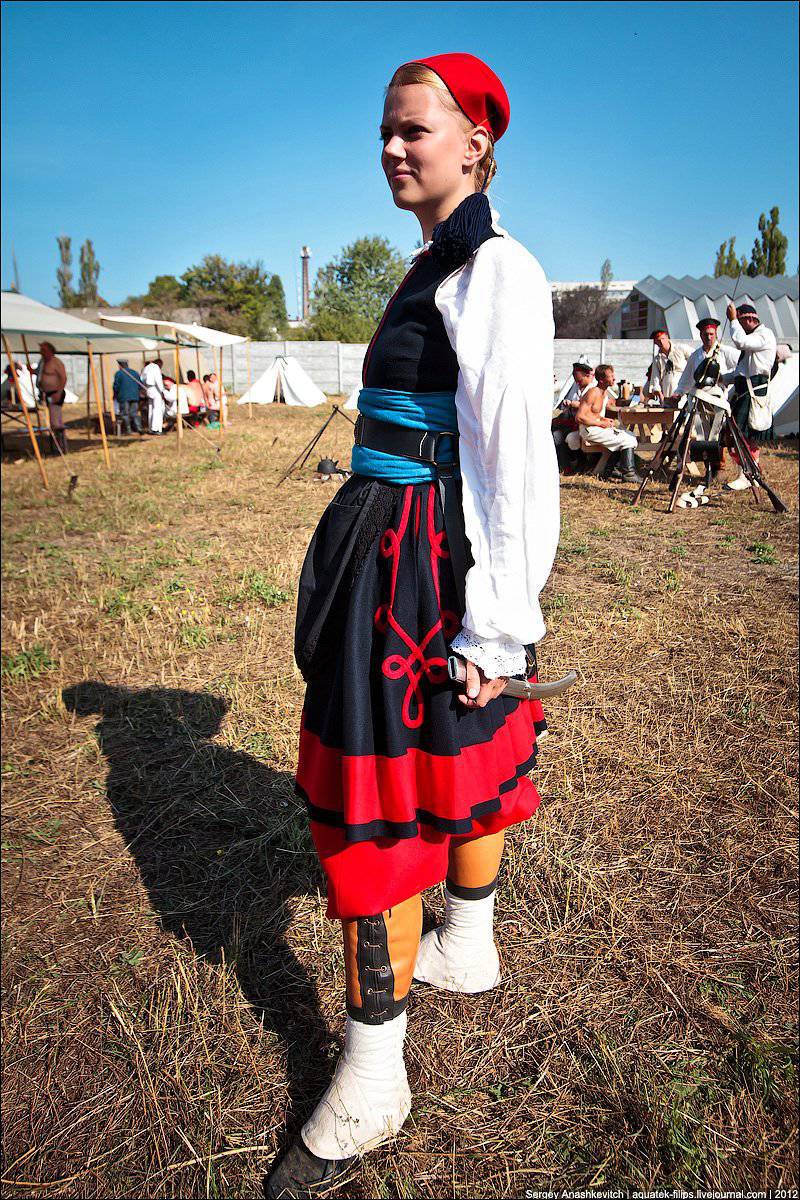
13. The Zouavs' waist gear was different from the linear parts. Black leather belt fastened with brass buckles. To the belt was relied cartridge bag sample foot rangers and a leather blade for wearing a bayonet. Vivandier, of course, did not have a cartridge bag, as a rule, but he often had a sword. Men - sergeants and corporals - had a cleaver attached to their belts.
14. The fact that the Vivandiers were included in the regiment made their work more dangerous, moving almost to the front line. It happened that they had to take part in the battle, armed with a musket. However, the command did not encourage such "unfeminine" behavior and almost never presented them to awards for heroism.
After the Crimean War, the Zouaves participated in the Franco-Prussian War, the First and Second World War. During the American Civil War, some American regiments called themselves Zouaves and took their uniform elements. Even now you can see references to Zouavian fire brigades and volunteer groups.
And finally, this short story is an interesting, but important fact. The Zouaves were the only military unit that consisted of deputies by about 80%. These are experienced soldiers who have served their time and remained in the army, replacing another person by agreement. Something like a modern contract. It was the most professional branch of the time.
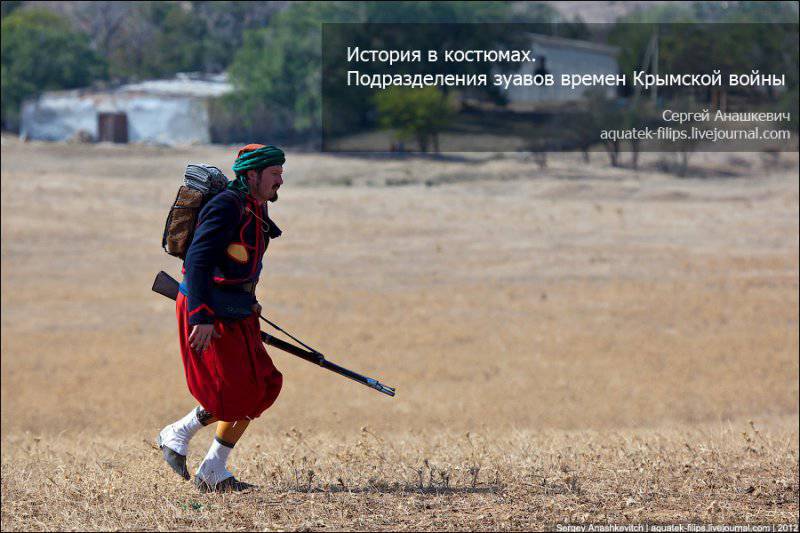
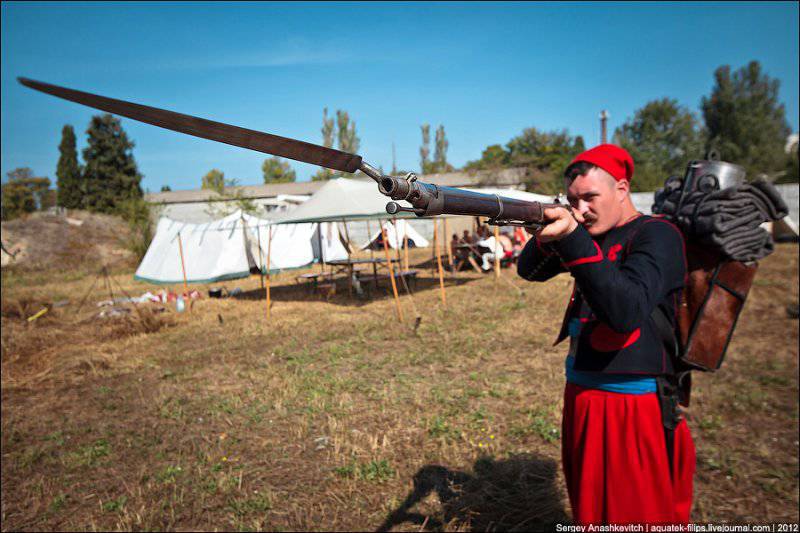
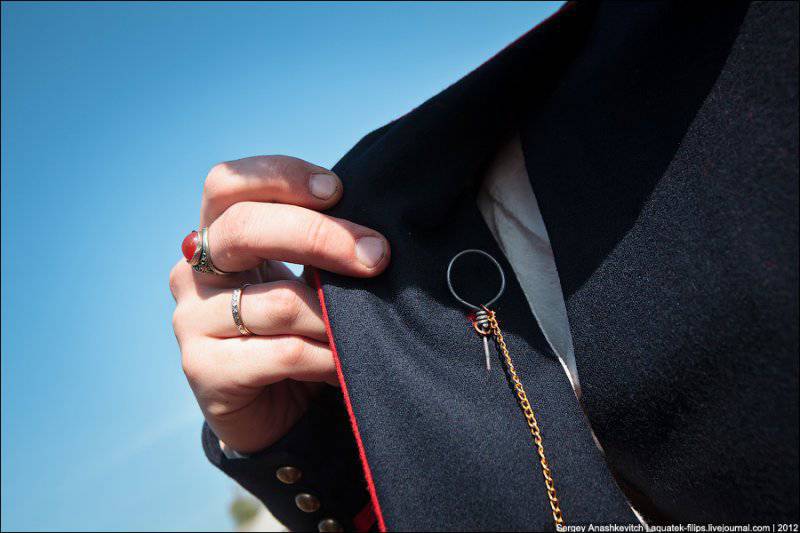
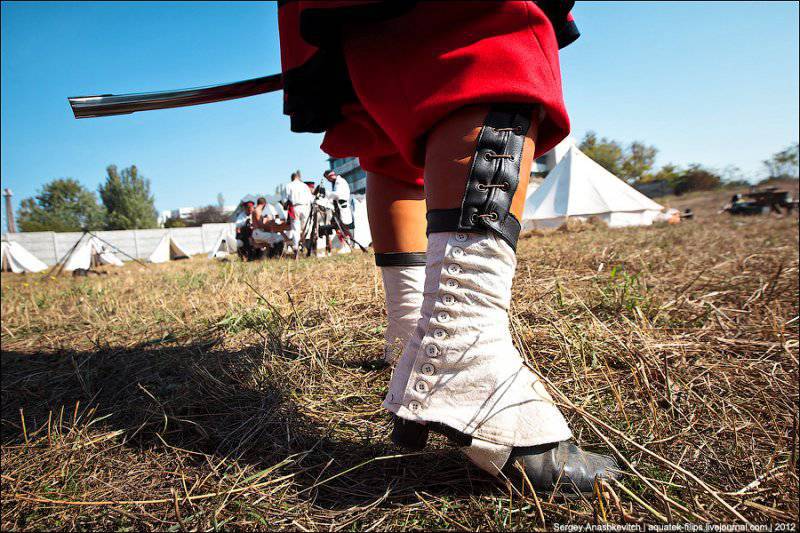
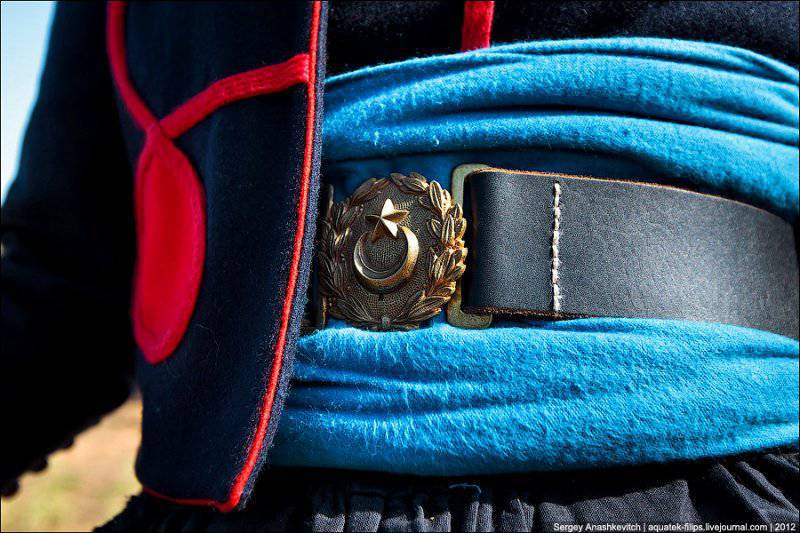
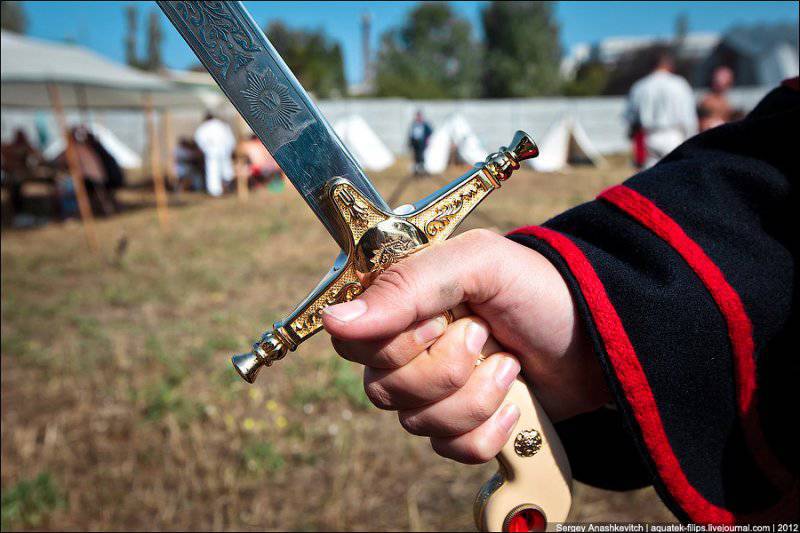
Information